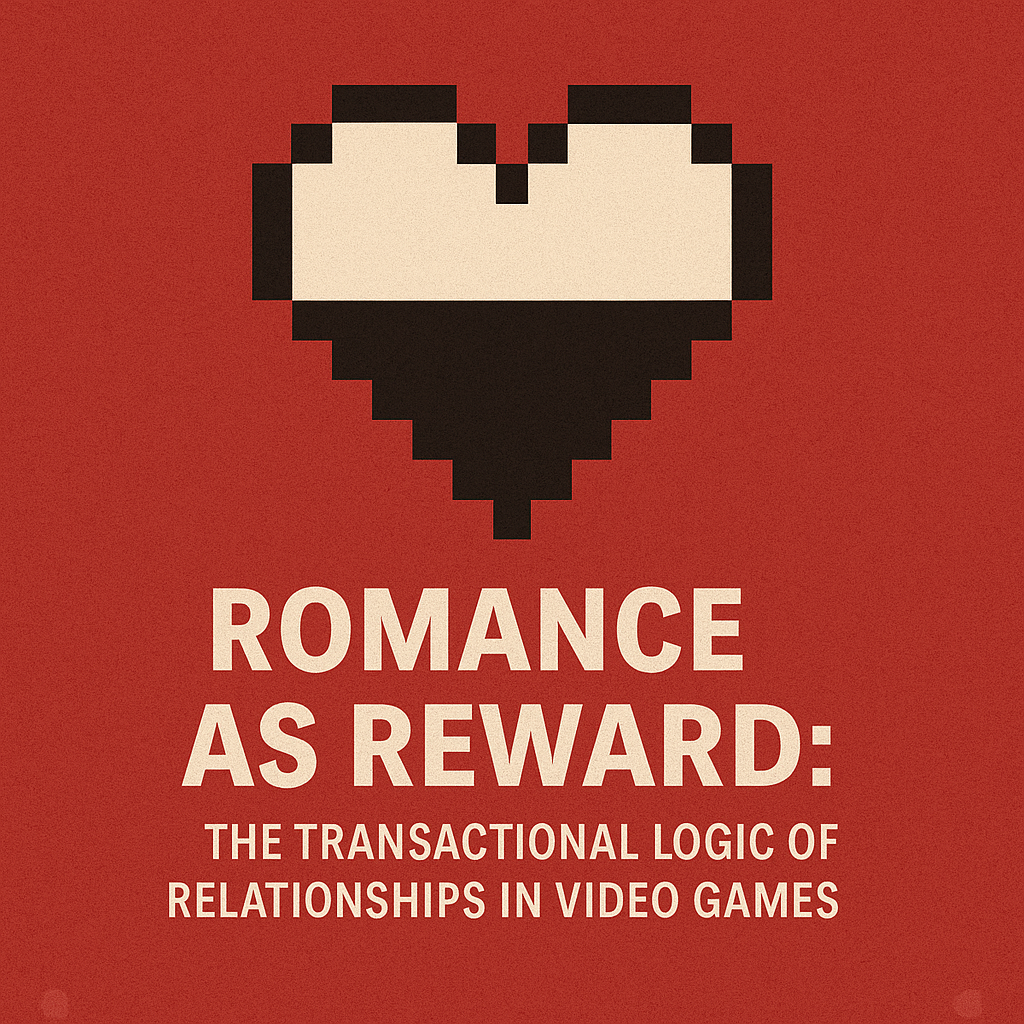Kingdom Come Deliverance 2: Where are the Children? When Cognitive Dissonance Impacts Immersion
The long-awaited sequel to Kingdom Come: Deliverance has finally arrived. Building on the immersive historical RPG experience that Warhorse Studios pioneered in the original title, Kingdom Come Deliverance 2 promised to elevate authenticity and realism to new heights. The game is an epic with expanded territories, refined combat mechanics, and a storyline deeply rooted in the socio-political climate of medieval Bohemia.
However, following its release, one critical omission has raised our eyebrows: the continued absence of children in towns, villages, and households. While the first Kingdom Come: Deliverance was often lauded for its attention to historical detail, it also depicted a medieval world populated exclusively by adults. Now, with the sequel in our hands, we find ourselves asking the same question, where are the children? and more importantly why does this bother us?
Well, this glaring absence triggers a psychological phenomenon known as cognitive dissonance, which can undermine the sense of total immersion that the game otherwise achieves. In this article, we explore why the lack of children can disrupt immersion, how cognitive dissonance plays a pivotal role in this break, and what it might mean for players and developers alike.
The Missing Children of Kingdom Come Deliverance 2
From the moment players step into the meticulously crafted towns and rolling countryside, Kingdom Come Deliverance 2 showcases its dedication to realism. Character models, architecture, and even social hierarchies all echo the historical setting with surprising accuracy. These factors make the absence of children all the more conspicuous. In Medieval Bohemia, like any historical society, would have had a significant number of children, both as part of families and as independent workers apprenticing under local tradespeople. Their complete omission in a game lauded for “living and breathing” realism stands out starkly against the otherwise rich tapestry of NPCs. Logically this may be down to two reasons:
Ethical and Rating Concerns
Depicting children in a game world that includes violence and morally complex situations can be controversial. Some developers choose to avoid the topic to sidestep ethical debates, age-rating complications, or distressing gameplay scenarios involving minors.Technical Challenges
Creating child NPCs requires new models, animations, voice lines, and AI behaviours. This adds development overhead. Warhorse Studios has not offered extensive public commentary on this, but the workload and the potential for controversy could be factors in the decision to exclude young characters yet again.
Regardless of the rationale, the ongoing absence continues to be a source of discussion and debate within the community. For many fans, it feels contradictory to the series’ hallmark of authenticity and historical detail.
Understanding Cognitive Dissonance
Cognitive dissonance is a term introduced by psychologist Leon Festinger (1957) that describes the mental discomfort arising from holding two or more contradictory beliefs, values, or perceptions. In the context of Kingdom Come Deliverance 2, this tension emerges when players’ understanding of a “true-to-life” medieval setting collides with the observable fact that an entire age group is missing.
Expectation vs. Observation
Players arrive with the belief: “This is a highly realistic medieval sim.” When they observe no children, they face a contradiction “How can this be realistic if there are no children?” This contradiction creates dissonance.Efforts to Resolve Dissonance
Festinger’s theory posits that individuals try to reduce dissonance by adjusting their beliefs or rationalizing. Players might think, “Maybe children are out of sight,” or “The developers avoided them for moral reasons.” Yet, the more players explore without any trace of minors, the harder it becomes to sustain these justifications.The Immersion Break
Immersion depends on the coherence and internal consistency of a game world. Lingering questions “Why are there no kids in this bustling village?” undermine that coherence. When such questions dominate the player’s thoughts, the sense of “being there” is disrupted. Thus to rectify this cognitive dissonance players may choose to default to a position of ‘well its just a videogame and is not real’ therefore lessening the overall immersion of the game world.
The Psychology of Immersion
Immersion refers to the sensation of being deeply involved or “lost” in a video game’s environment. Key components include:
Consistency and Coherence
Gamers expect in-world logic to remain consistent. If a game is historically accurate in every other respect but omits a ubiquitous social group, it becomes an immersion-breaking inconsistency (Cairns et al., 2014).Sensory and Emotional Engagement
From architecture to ambient soundscapes, Kingdom Come Deliverance 2 does a remarkable job of transporting players to a medieval setting. However, the sounds of children playing or the sight of a family working the fields is a natural component of real-life medieval villages. Their absence is noticeable and can leave the world feeling eerily incomplete, especially when children and babies are mentioned by NPC’s, in fact it was only when a quest giver directly told me that they need something to protect their children did I say to myself ‘what children?’ and this shattered my immersion.Narrative Integration
Well-written games weave every character and setting detail into the broader narrative. Children could offer side quests, emotional stakes, and cultural depth. Without them, certain story elements like inheritance, lineage, or even schooling lack representation.
Consequences for Player Experience
Players who value the historical authenticity that Kingdom Come Deliverance 2 markets itself on may feel a degree of disappointment, frustration, or even confusion. Over time, that initial burst of cognitive dissonance can evolve into:
Constant Background Questioning: The unanswered “Where are the children?” may nag at players, distracting from the broader narrative and challenges.
Reduced Suspension of Disbelief: Once a discrepancy is discovered, further minor inconsistencies can become more obvious, chipping away at overall immersion.
Missed Story Opportunities: Children in medieval society could open up quest lines related to apprenticeships, family feuds, or cultural traditions unique to that era.
Potential Developer Perspectives
While some players view the omission of children purely as a shortcoming, developers might have more nuanced considerations:
Avoiding Controversy
Many players and rating boards are sensitive to violence or morally ambiguous scenarios involving minors. Omitting children entirely can be a safer route, albeit at the cost of realism. However, we only have to look to the Witcher 3 to see how children can be integrated into a morally ambiguous world.Resource Allocation
Complex child NPC systems require additional resources that might be needed elsewhere like expanded regions, refined AI for adult characters, or graphical updates.Narrative Focus
Warhorse Studios has emphasized adult-centric story arcs; political intrigue, warfare, and courtly drama. Children might not be central to these themes, leading to their exclusion.
However, from a purely psychological and immersive standpoint, these reasons may still feel insufficient to players who prioritize holistic authenticity.
Addressing the Dissonance: Suggestions and Future Possibilities
In-Game Explanations: Incorporating dialogue or lore to explain the scarcity of children (like a recent epidemic) would at least acknowledge the issue and alleviate some dissonance.
Restricted Interaction Mechanics: If children were present, developers could limit harmful actions or violent scenarios involving them, thus mitigating ethical and rating concerns.
Dedicated DLC or Updates: Future patches might introduce child NPCs in a controlled way, perhaps showcasing unique medieval coming-of-age elements. Engaging the community for feedback on how best to implement this could also foster goodwill.
Tips for Players
Focus on Other Merits: Kingdom Come Deliverance 2 excels in many areas realistic combat, rich dialogue, and intricate political storylines. Recognizing these strengths can help offset lingering dissonance.
Offer Constructive Feedback: When voicing concerns on forums or social media, articulate how child NPCs (or an explanation for their absence) might improve immersion. Constructive dialogue can guide future patches or expansions.
Maintain Perspective: No game can truly replicate reality in every detail. While immersion is crucial, it can be helpful to remember the practical limitations and ethical dilemmas developers face.
Simply Put
Kingdom Come Deliverance 2 successfully refines many aspects of its predecessor expanding the scope of medieval Bohemia while retaining a commitment to detailed historical representation. Yet, the continued absence of children raises significant questions about realism. This omission can lead to cognitive dissonance, wherein the player’s expectation of a lifelike medieval experience clashes with an environment missing a fundamental demographic.
Understanding why that break in immersion happens, through the lens of cognitive dissonance can help both players and developers approach the issue more thoughtfully. For developers, including child NPCs or providing believable in-game reasoning could enrich narrative depth and fortify immersion. For players, recognizing the complex technical and ethical decisions behind this design choice can contextualize the gap, even if it remains a point of contention. Ultimately, as gaming technology and storytelling continue to evolve, addressing such nuances can only enhance the authenticity that Kingdom Come Deliverance is known for.
References
Who but not where: The effect of social play on immersion in digital games | Request PDF
Festinger, L. (1957). A Theory of Cognitive Dissonance. Stanford University Press.
Warhorse Studios. (2018). Kingdom Come: Deliverance [Video game]. Deep Silver.
Warhorse Studios. (2024/2025). Kingdom Come Deliverance 2 [Video game]. Deep Silver
Thank you for reading! If you’re curious about the psychological magic behind gaming, head over to our Psychology of Videogames section. Learn how immersive character design, reward systems, and cognitive processes fuel our fascination with virtual worlds. From player engagement to mental well-being, discover what makes certain games so captivating—and how these insights apply to real life.










